How to Make Soap With Beef Tallow
This cold-pressed tallow soap recipe is made with pure tallow and coconut oil, creating the perfect soap bar to use for dry or sensitive skin.
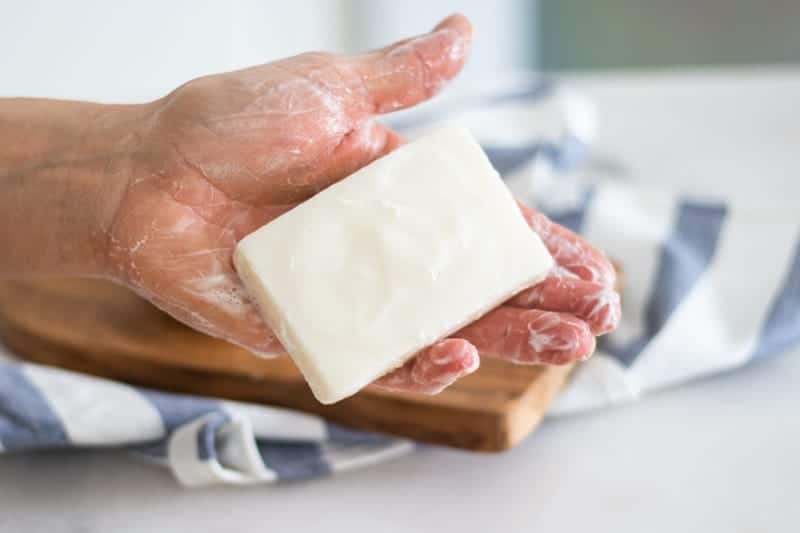
Making cold-pressed soap confined is non equally difficult equally information technology seems. And this tallow soap recipe is no exception! The process is the same as any cold-pressed soap; it is just a thing of switching up the ingredients used.
Making your ain soap is a smashing way to remove toxins from your habitation and relieve money. Your skin is the largest organ in your body and everything that gets put on it is absorbed into the bloodstream.
This is why it is so of import to apply natural skincare products. Once you get started making your own, you will realize it isn't every bit hard as you might think. And fair alarm, it gets addicting!
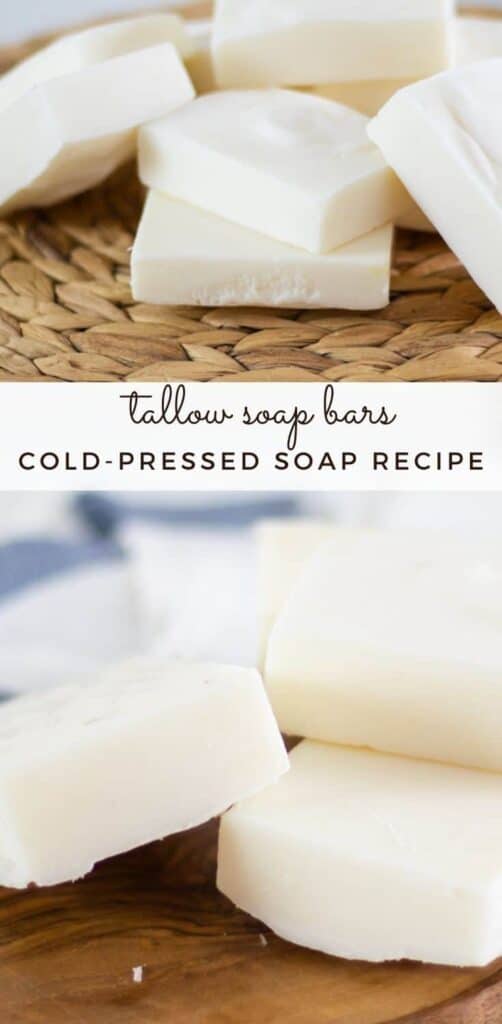
WHAT IS TALLOW?
Tallow is rendered fatty. It can come up from whatsoever animal just most usually comes from beefiness fat. Like coconut oil, tallow is a liquid when in warm temperatures and solid in colder temperatures.
Rendered tallow can be used to make candles, soap, lip lotion, and even soap! Tallow is a slap-up cooking fat too. It has a loftier smoke point making it a salubrious option.
Beefiness tallow has a ton of benefits for the pare. It is full of vitamins A, D, K, E, & B12. Vitamin E is 1 of the all-time vitamins to promote healthy and clean skin.
WHY USE TALLOW IN SOAP BARS?
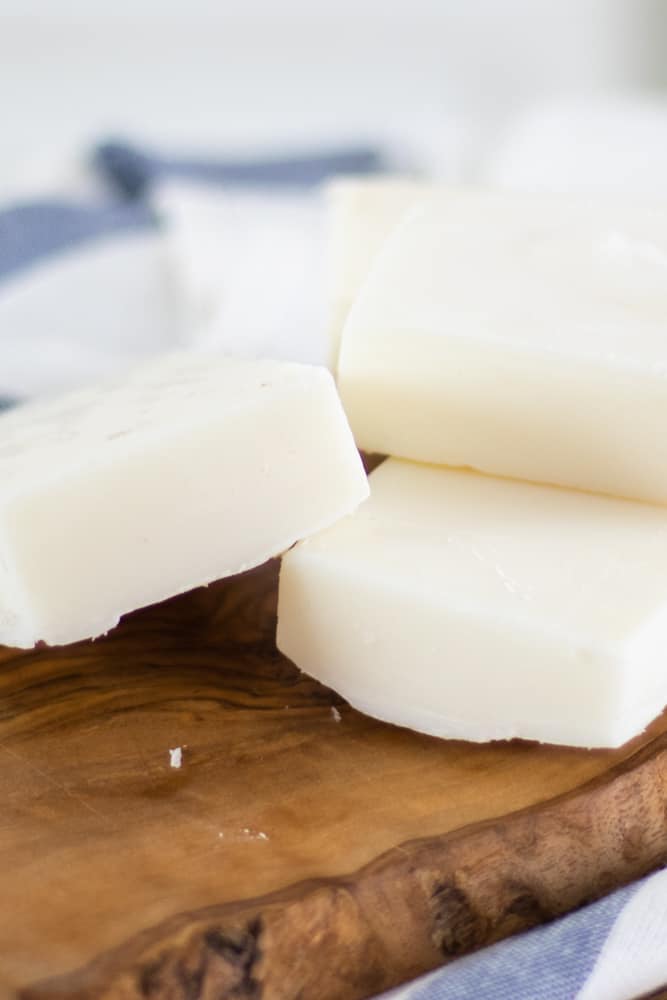
Tallow has been used in soap making for a very long time. Back in the day, earlier we had access to ordering any oil at the printing of a push, tallow is what they used.
Homesteaders would render the tallow from cows or pigs and use it in lather making and cooking. If you have a farm, you tin can make this soap for free only from fauna fat!
Tallow soap has a ton of nifty benefits for the skin, lathers well, gently cleanses the pare, and is very moisturizing.
WHAT Do I NEED TO Make SOAP WITH TALLOW?
All yous need to make pure tallow soap confined is tallow, water, and lye. For this recipe, I am going to add coconut oil. I dearest using coconut oil for soap making as information technology is one of the most popular fats to add together and is very nourishing for the pare.
This post contains affiliate links, which means I make a small commission at no extra price to you. Become my total disclosure HERE.
TOOLS NEEDED TO Make COLD-PROCESS SOAP Bars
- Digital Scale
- Immersion blender
- Kitchen thermometer
- Soap molds
INGREDIENTS NEEDED TO Brand TALLOW SOAP BARS
I used the Bramble Berry Calculator to get the exact measurements.
- eighteen ounces beef tallow (60%)
- 12 ounces coconut oil (40%)
- iv.42 ounces of lye
- 9.89 ounces of water
(Makes approximately 12 bars)
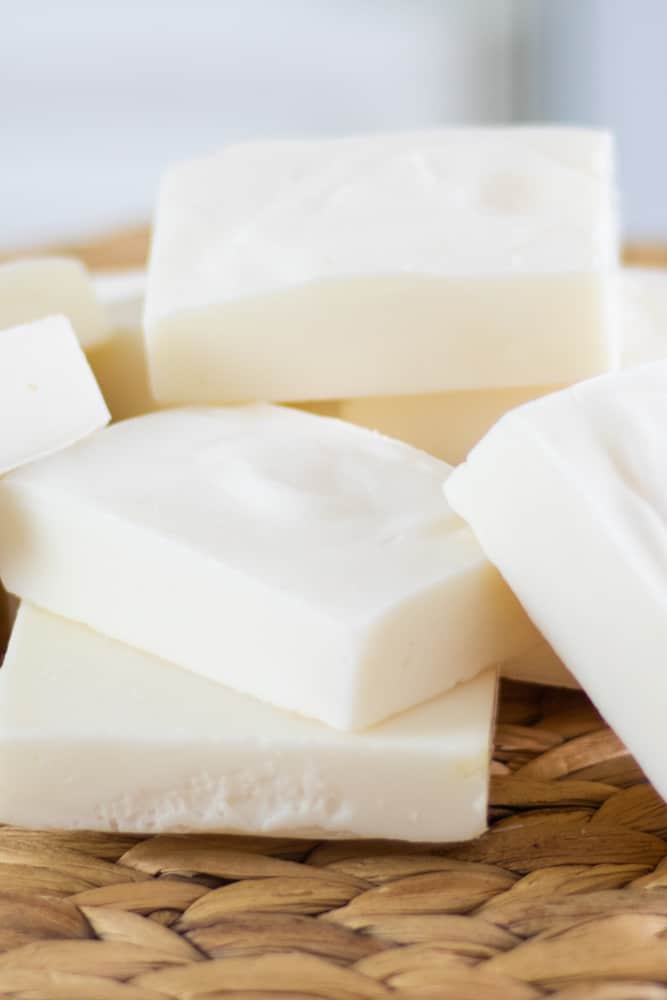
HOW TO MAKE TALLOW SOAP
- Using a digital scale, mensurate out your water and cascade it into a heat-resistant drinking glass. This is important because when you lot add in the lye, it will become very hot, very quick.
- Measure out the lye and add information technology to the water. Stir the lye until it dissolves. Note, the chemic reaction will cause information technology to rut up rapidly.
- Measuring out the tallow and kokosnoot oil, add them both to a saucepan. Melt over medium heat.
- One time the ingredients are melted, allow them to cool dorsum down to 100 degrees. This may take a couple of hours.
- Once the fats reach 100 degrees, information technology is time to mix the lye h2o with the oils. Slowly add the lye and water to the oils, mix with an immersion blender. This volition take a couple of minutes. You will know it is the right consistency when the lather from the blender drips and pools upwards at the top of the soap in the saucepan. This is known as the trace.
- If using essential oils or colour, add together those in now. Stir well.
- Pour the soap into the soap molds. If using silicone soap molds, you don't take to do anything to them before pouring them in. Other molds may crave parchment paper.
- Allow the soap to harden and sit in the molds for at to the lowest degree 24 hours or upward to iii days.
- Remove the lather from the molds and allow it to cure for 3-4 weeks before using.
RECIPE NOTES:
- Be sure to wear gloves, long sleeves, and middle protection when using lye. It is best to brand soap in a well-ventilated area to avert animate in lye.
- When making lather, make sure there are no kids or pets around.
- The lather bars are safe once cured. A minimum of 3 weeks is recommended before using.
BENEFITS OF Homemade Lather BARS
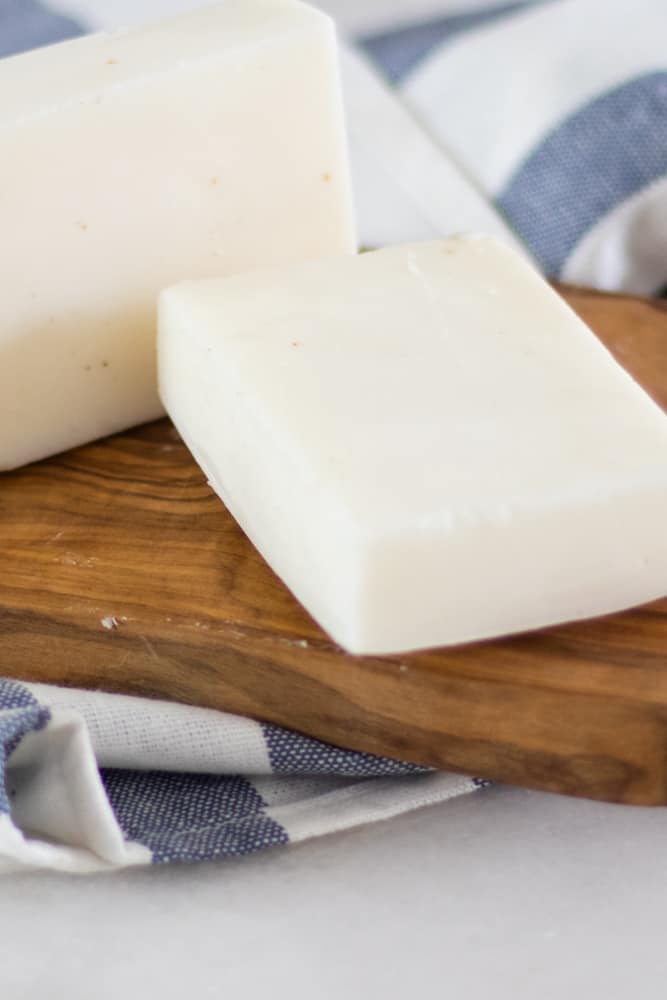
As mentioned above, making your own soap or whatsoever skincare, for that affair, is a great mode to know exactly what y'all are putting on your pare. Using pure ingredients like coconut oil and tallow are the all-time for sensitive skin.
TALLOW
Tallow is commonly used in lather making because it makes a hard soap bar that lasts for a long time. You may be wondering about the scent as information technology is animal fat.
It does have a "fat" smell, but it isn't very strong. Once the bars are cured, they will pretty much have no animal fat scent.
Kokosnoot OIL
Kokosnoot oil is the most popular fat to use in soap making. Information technology protects the pare, is very moisturizing, and can reduce the signs of aging.
Kokosnoot oil tin be institute in almost all of my skincare products and often times plant in conventional skincare also! Information technology makes a cracking lather base.
If you want to brand a pure tallow lather bar, y'all can leave the coconut oil out and adjust your measurements using a soap estimator.
Adding IN ESSENTIAL OILS TO COLD-Procedure SOAP BARS
Essential oils are a great way to customize the scent of your soap bars. Some of the best essential oils to utilise in soap making are lavender, frankincense, wild orange, chamomile, or peppermint.
If you lot choose to add in essential oils, you tin can add them into the mixture right before pouring the soap into the molds.
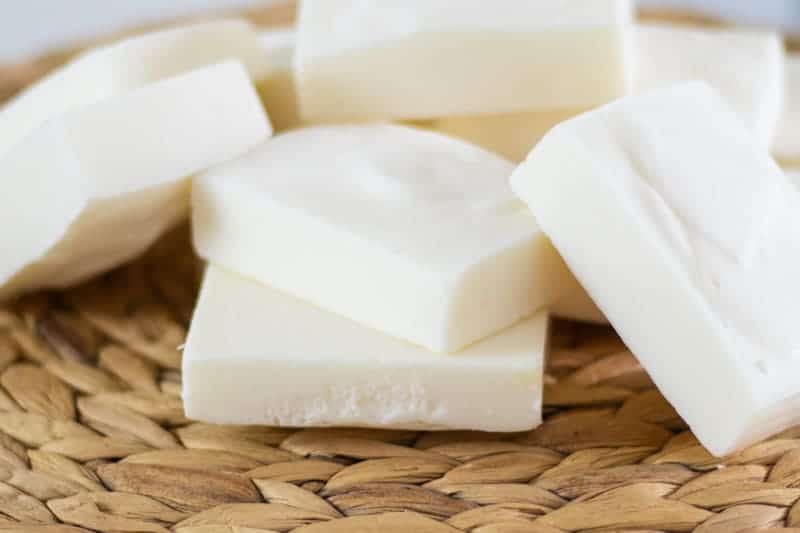
TIPS FOR COLD-PROCESS Soap RECIPES
Every bit daunting equally it might sound, information technology is imperative that you measure your ingredients precisely. This is very easy to practice if you have a digital kitchen scale.
When lye is mixed with fat, information technology makes lather. This procedure is chosen saponification. When the procedure is done correctly, at that place volition exist no lye in your final production.
Be sure to employ an immersion or stick blender to get the correct trace. It will take much longer if doing this past hand!
Yous can use a variety of soap molds when making soap with tallow, simply I highly recommend using silicone. They are the easiest molds to employ and require no prep.
Prep Fourth dimension v minutes
Agile Time ane hour
Additional Fourth dimension 1 solar day
Total Fourth dimension 1 day one hour 5 minutes
Materials
- 18 ounces of beef tallow
- 12 ounces of kokosnoot oil
- iv.42 ounces lye
- 9.89 ounces of water
Tools
- Digital Scale
- Immersion blender
- Kitchen thermometer
- Soap molds
Instructions
- Using a digital scale, measure your water and pour it into a oestrus-resistant glass. This is important because when you add in the lye, it will go very hot very chop-chop.
- Measure out the lye and add it to the h2o. Stir the lye until it dissolves. Note, the chemical reaction will cause it to oestrus up quickly.
- Measure out the tallow and coconut oil, add together to a saucepan. Melt over medium rut.
- Once the ingredients are melted, allow them to cool back downwardly to 100 degrees. This may take a couple of hours.
- Once the fats reach 100 degrees, it is time to mix the lye water with the oils. Slowly add the lye and water to the oils and mix with an immersion blender. This will take a couple of minutes. Y'all will know it is the correct consistency when the lather from the blender drips and pools up on top of the lather in the saucepan. This is known every bit the trace.
- If using essential oils or colour, add those in now. Stir well.
- Pour the soap into the soap molds. If using silicone soap molds, y'all don't have to do anything to them before adding the soap. Other molds may require parchment paper.
- Allow the soap to harden and sit in the molds for at to the lowest degree 24 hours or up to 3 days.
- Remove the soap from the molds and let it to cure for 3-4 weeks before using.
Notes
Proper caution must be taken when working with lye. Clothing prophylactic goggles, gloves and work in a well-ventilated area.
More than Lather BAR RECIPES:
- Caprine animal Milk Cook and Pour
- Moisturizing Soap Bars
- Simple Melt and Pour Soap Bars
- Gentle Babe Soap Bar
- Shave Soap Bar
remingtonmusbacruther.blogspot.com
Source: https://www.ouroilyhouse.com/cold-pressed-tallow-soap/